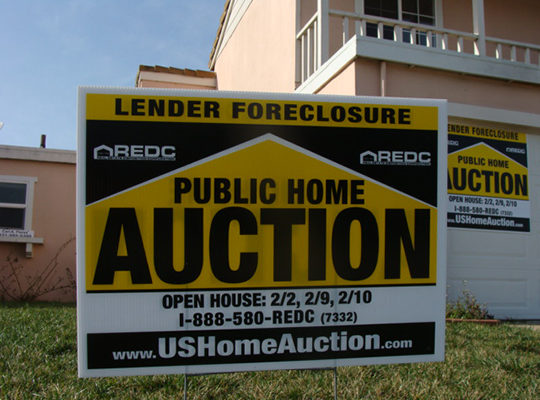
House in Salinas, California under foreclosure, following the bursting of the U.S. real estate bubble. Source:Â Wikipedia.
Dear Diary,
Dow down 70 points. Gold back under $1,300 an ounce. Nothing much to talk about there…
Meanwhile, we see pain and suffering. At the bottom of the financial heap, day by day, people struggle to get by. The averages hide it.
The average figures – for wages, household incomes and household wealth – are lifted skyward by the gas at the top. Thanks to the rise in asset prices, those with substantial assets have become substantially richer, raising the averages.
But what about those at the bottom?
This is not the middle class we’re talking about, but those down below. How do they live? What do they eat and drink? How do they make ends meet?
Not that we have become a bleeding heart. And not that we are concerned about fairness either. Those concerns are much too generous and socially conscious for us.
No, we’re just worried, selfishly, about what happens to the passengers in the upper cabins, when life below deck becomes intolerable.
Last On, First Off
More and more of the credit-drenched economy depends on these marginal people down in the hold.
In 2007, it was subprime housing debt that tipped the financial world into crisis. Now, we have subprime auto loans… subprime student loans… subprime corporate loans… and subprime government debt (Senegal… Ecuador… Greece), too.
From Charles Hugh Smith at OfTwoMinds.com:
The mainstream media is delighted to highlight positive economic data, but nobody ever asks about the quality of the borrowers who are behind the rosy numbers.
Behind the rosy numbers, sales and profits are increasingly dependent on marginal buyers and borrowers: those buying on credit who would not qualify to borrow money in a system ruled by prudent risk-management.
These marginal borrower/buyers are last on, first off:Â They qualify for loans at the end of a credit expansion, when lenders throw caution to the winds to reap the profits from issuing new mortgages, auto loans, student loans, credit cards, etc. to marginal borrowers.
These marginal borrowers are the first to default, because they have insufficient income and collateral to support their loans.

